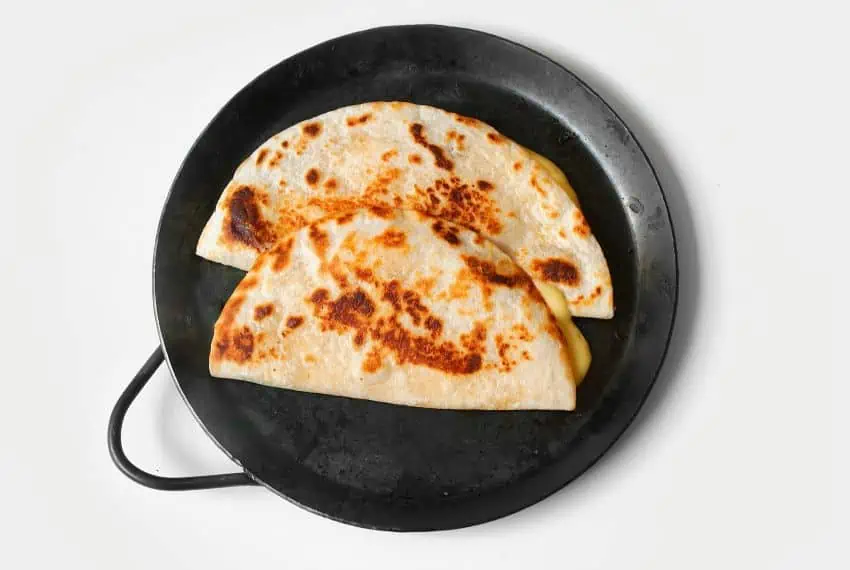Mexico is never afraid of taking a foreign one and doing it better. Listen to the pig. Ask Shawarma. Why not kimchi? Why not throw in a warm pan that was born in Korean winter, sour cabbage, melted cheese and Mexican comfort blanket? When we are in it, why not abandon a small anchor to connect all that quiet, bright punch to the delicious Kimschi Cassatilas?
Let us take backup. The fish has always been a part of Mexico’s culinary story. Missionaries and European spices have long been before, The coastal people smoked the fish on the open fireIt was folded or dried to travel. When Spanish arrived, they brought olive oil, garlic and wheat – suddenly the fish was roasted, stewed, and the sauces were served, and it was undoubtedly smelled like a monk’s dinner.
That’s the case: the Mexican Food is always a fusion food. This is never stable. Varagruz built the entire culinary traditions around the Mediterranean taste. Baja is a concept, which is inspired by English and Asian techniques, and it turned it into a Baja fish taco, that famous confusion, cream, acid and spice. Mexico teaches them how to take the taste of the world and create new friends.
What happens when you meet the hot, kui warmth of Kassadilla’s hot, spicy, unusual kimsi? Mantra. Fermentation has long been a part of Mexico’s cooking DNA: Pulk, Debach, even the worst sour tips in ancient corn masa. Kimchi does not collide: it grows with Mexican products. It brings a sharp, which cuts the cheese rich, and as the jalapinos made of pickles have been done for generations. But bold. Loudly. Mariachi song in the Kimchi room.
Then we add the anchors. It is not too complicating things, but combining the story together. Mexican recipes have long used the equivalent of fish sauce – dried shrimp, salt added fish, fifth taste hidden in a mole or caltao, it cannot be named, but longless. The anchor disappears in the skillet, but leaves a delicious echo. This is the signature of the sea in the recipe.
A Kimchi Kascadilla with Anjovi is not a fusion for the sake of the fusion. This is a reminder, the borders are drawn in maps, not on dinner plates. It is a comforting food for a world that continues to collide, change and remix. It is a bite that felt salt, spicy, deceitful, firm-barge and brand new.

When someone asks, “Is that real?” Smile. The story we tell you to feel safe is safe. Tasty, on the other hand, is real. It is warm and confused, dripping down your fingers and keeping another bite.
In conclusion, Mexico’s culinary genius is always: take the world gives you, love it, change, and do better. Meet the kimchi and cheese, tortilla and anchor. Sit down, eat and let me know what you think in the ideas.
Kimchi Cassadillas with anchor
Materials
- 2 large flour tortillas
- ½ cup sharp cedar cheese, grinded
- ½ cup Mozarella, grinded
- 1 cup well coated kimsi, chopped
- 1 garlic clove, sliced minced
- 2 Anjovi Fillts, finely chopped (or 1 tablespoon anchor paste)
- 1 tablespoon grilled sesame oil
- 1 tablespoon Kochujang (but recommended if if if you want)
- 1 scalian, cut into thin
- Fry butter or neutral oil
- Optional garnish: sesame seeds, extra scalions, lime wedges
Instructions
- Create the taste base: Heat a small pan over medium heat, add a splash oil, minced garlic and chopped anchors. For about 30 seconds, stir until the anchors are dissolved on the garlic. Add chopped kimsi, sesame oil and cochujang. Stir for 2 to 3 minutes and consider that you eat it straight from the pan until it is very good. Turn off the heat and set aside.
- One by one: Put a tortilla. Sprinkle half the cheese, spread the hot kimchi-antevi mixture evenly above, and then scatter the scalians. Add the remaining cheese and the top tortilla on top.
- Cook: Heat a pan on medium heat and add a little butter or oil. Cook the sides of the cheese for about 2-3 minutes on each side until the glide in the gassadilla, the golden brown and crispy.
- Serve the chopper: Transfer to a cutting board, chop the umbrella, sprinkle with sesame seeds, squeeze the limestone, and if you feel luxurious.
Stephen Randal He has lived in Mexico since 2018 via Kentucky, and Germany before. He is an enthusiastic amateur cook, he gets inspiration from many foods with favorites including Mexican and Mediterranean.
(tagstotranslate) korea
Story Credit








